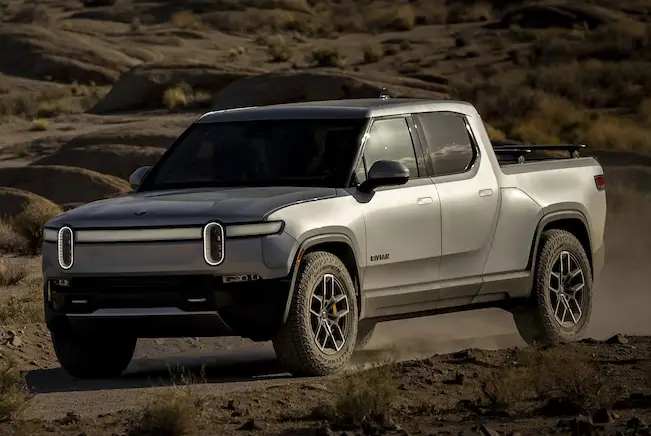Following disappointing earnings reports from Lucid and Fisker, Rivian (RIVN) posted a smaller loss than expected and beat estimates for revenue in the first quarter, giving EV fans some hope for the sector.
Rivian’s top line revenue for the quarter came in at $661 million, compared to estimates of $660.3 million. It was down slightly from the fourth quarter’s $663 million, however it was more than six times the $95 million it earned in the first quarter one year ago. Adjusted earnings per share posted a loss of $1.25, which was better than the estimates for a loss of $1.56.
The company reaffirmed its 50,000 unit annual production guidance it had offered in its fourth quarter earnings report. In 2021, Rivian had produced just below 25,000 vehicles as component shortages and production problems at its plant in Normal Illinois weighed down productivity.
The company is still predicting an adjusted EBITDA loss for the year of $4.3 billion, narrowing the $5.2 billion EBITDA loss of 2022. At the end of the quarter, the company reported it had $11.24 billion in cash and cash equivalents, down from the $12 billion it held at the end of the fourth quarter of 2022. However, the company predicted it will achieve a positive gross profit in 2024.
Rivian had disclosed in April that it had 7,946 deliveries in the first quarter, beating Bloomberg estimates of 7,752 deliveries. Production also beat estimates, at 9,395 vehicles, vs an estimate of 8,752 vehicles.
One report earlier in March had suggested the company had told employees that it could produce as many as 62,000 vehicles this year, however a Rivian spokesperson clarified that the figure had been “taken out of context,” and the official guidance was 50,000 vehicles.
Many analysts had been expecting the worst in the report. Despite being a long-term Rivian-bull, Alexander Potter of Piper Sandler had downgraded his assessment of the stock in mid-April, grading it neutral, and slashing his price target from $63 to $15, noting there were concerns over a potential cash crunch. Potter predicted the company will need to raise $4 billion in the future, and investors would have to pay for that through either debt issuance, or new stock.
Although Potter is still a fan of the company’s long-term strategy of vertically integrated production, he does not see it bearing fruit until years from now.

